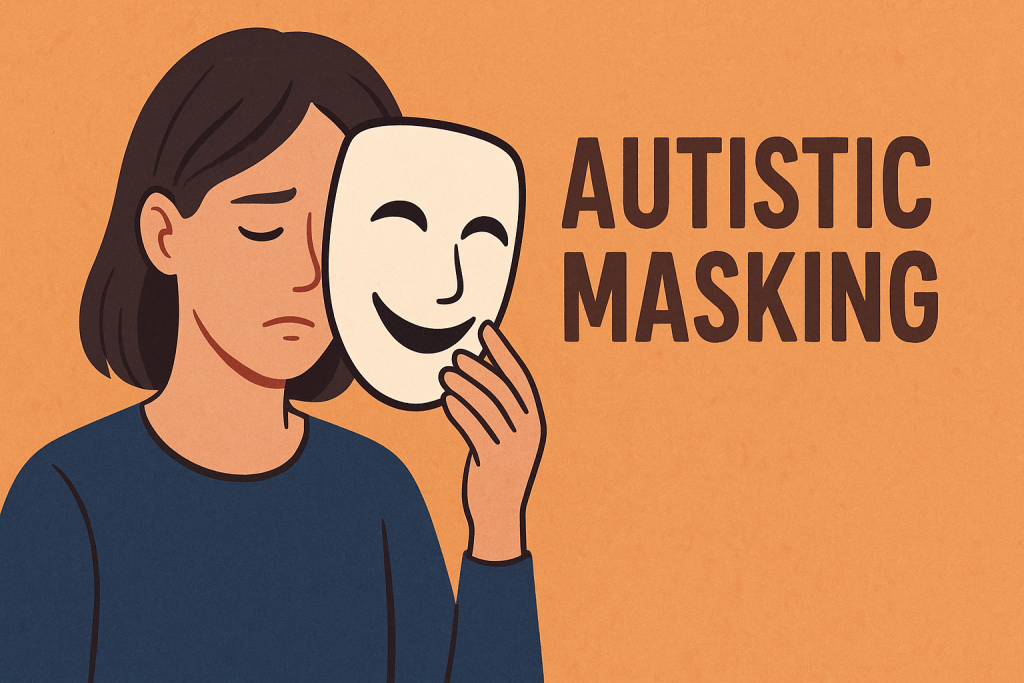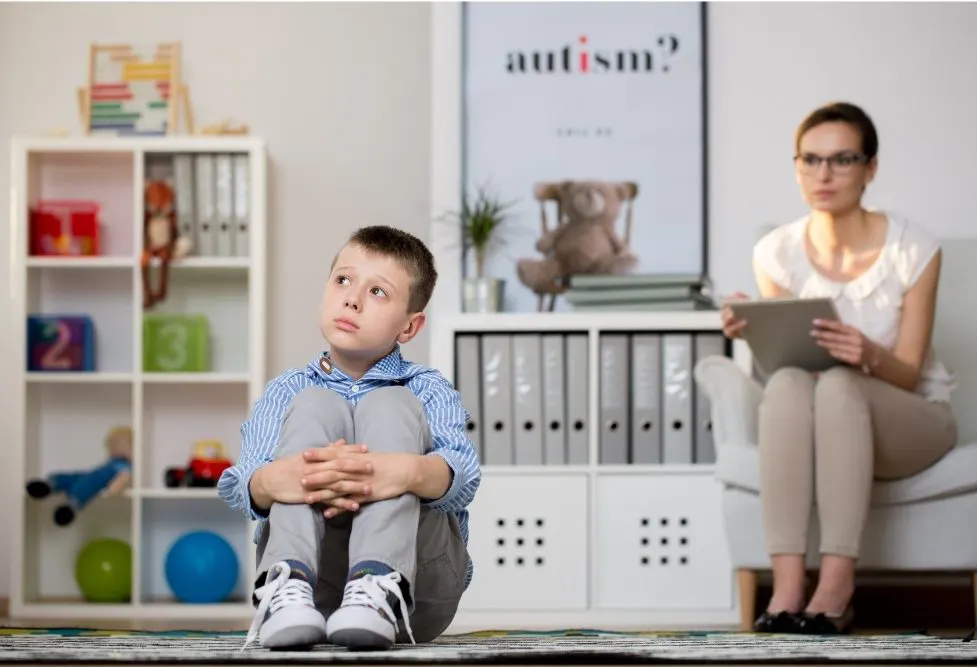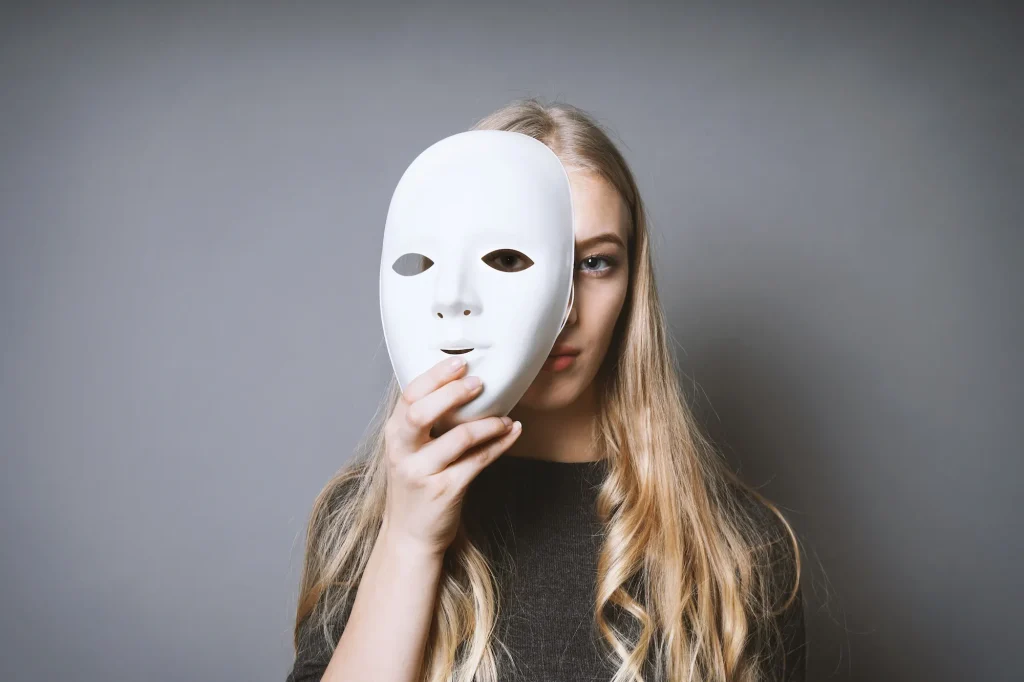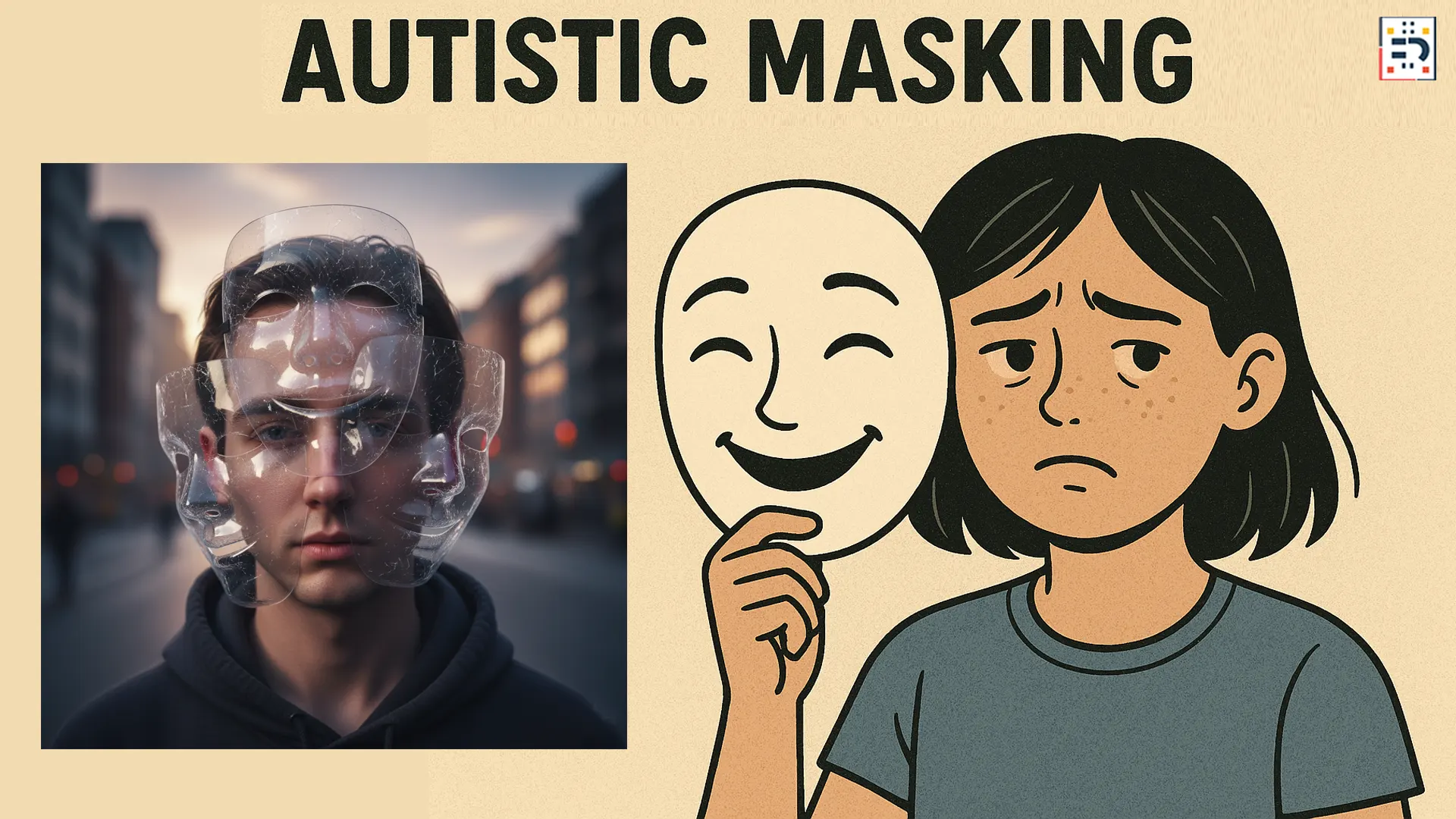What Is Autistic Masking?
Autistic masking—also known as camouflaging or social masking—is the practice of suppressing or hiding natural autistic behaviors to appear more neurotypical. It’s like wearing an invisible costume that helps autistic individuals blend into social situations, workplaces, and everyday interactions.
For millions of Americans on the autism spectrum disorder (ASD), masking isn’t a choice—it’s a survival mechanism developed over years of trying to fit into a neurotypical world. According to the Centers for Disease Control and Prevention (CDC), approximately 1 in 36 children in the United States has been diagnosed with autism spectrum disorder, making this a significant issue affecting families nationwide.
The Many Faces of Masking
Masking can look different for everyone, but common examples include:
Social Masking:
- Forcing eye contact even when it feels overwhelming
- Mimicking others’ facial expressions and body language
- Suppressing stimming behaviors (like hand-flapping or rocking)
- Scripting conversations or rehearsing social interactions
Professional Masking:
- Hiding sensory sensitivities in open office environments
- Suppressing the need for routine and predictability
- Forcing participation in team-building activities or casual workplace socializing
- Masking intense focus or special interests to appear more “well-rounded”
Academic Masking:
- Suppressing the urge to correct teachers or provide detailed information
- Hiding difficulty with group projects or presentations
- Masking sensory overload in crowded classrooms or loud environments

The Cost of Constant Performance
While masking might help autistic individuals navigate social and professional situations, it comes with significant hidden costs:
Mental and Physical Exhaustion
Imagine acting in a play for 8-12 hours a day, every day. That’s what masking feels like—a constant performance that drains mental and physical energy. Many autistic individuals experience what’s called “autistic burnout,” a state of physical and mental exhaustion that can last weeks or months. The Autistic Self Advocacy Network (ASAN) provides extensive resources on understanding and managing autistic burnout.
Loss of Identity
When someone masks extensively, they may lose touch with their authentic self. The question “Who am I when I’m not performing?” becomes increasingly difficult to answer. This identity crisis is particularly common among late-diagnosed adults who have spent decades masking their autism symptoms.
Delayed Diagnosis and Support
Successful masking often means that autism goes unrecognized, particularly in girls and women, people of color, and adults. This can delay access to crucial autism support services and accommodations available through programs like those offered by the Autism Society of America.
Mental Health Challenges
Studies show higher rates of anxiety, depression, and suicidal ideation among autistic individuals who mask extensively. The constant stress of hiding one’s true self takes a significant psychological toll. If you or someone you know needs support, the National Suicide Prevention Lifeline provides 24/7 crisis support.
The Gender and Cultural Divide
Research indicates that autistic girls and women are more likely to engage in social camouflaging than their male counterparts. This may be due to different social expectations and the way autism has historically been studied primarily in boys and men. The Organization for Autism Research has conducted extensive studies on gender differences in autism presentation.
In American culture, where social networking and “fitting in” are often crucial for success, the pressure to mask can be particularly intense. The “American Dream” narrative of self-improvement and adaptability can inadvertently pressure neurodivergent individuals to suppress their authentic selves.
Additionally, autistic individuals from minority communities may face additional layers of masking, navigating both neurotypical expectations and cultural pressures to represent their communities positively. The Autistic People of Color Fund provides resources specifically for autistic individuals from diverse backgrounds.
Recognizing Masking in Your Life
If you’re wondering whether you or someone you know might be masking, consider these questions:
- Do you feel exhausted after social interactions, even positive ones?
- Do you practice conversations or social scenarios in your head?
- Do you feel like you’re “performing” or “acting” in social situations?
- Do you suppress natural movements or behaviors to avoid standing out?
- Do you feel like people don’t know the “real” you?
- Do you need significant downtime after being around others?

Creating a More Inclusive America
As awareness of autism grows in the United States, we have an opportunity to create environments where masking isn’t necessary for survival:
Schools:
- Training teachers to recognize different presentations of autism spectrum disorder
- Creating sensory-friendly classroom environments for students with sensory processing differences
- Allowing alternative communication methods and special education accommodations
- Celebrating neurodiversity as a strength, not a deficit to be fixed
- Implementing Individualized Education Programs (IEPs) effectively
Workplaces:
- Implementing neurodiversity hiring initiatives and autism employment programs
- Providing sensory accommodations (quiet spaces, flexible lighting, noise-canceling headphones)
- Offering clear communication and structured feedback systems
- Creating inclusive policies that don’t penalize different social communication styles
- Following Americans with Disabilities Act (ADA) guidelines for workplace accommodations
Communities:
- Promoting autism acceptance and neurodiversity awareness, not just autism awareness
- Creating sensory-friendly community events and autism-friendly spaces
- Training service providers to recognize and accommodate autistic individuals
- Challenging stereotypes and misconceptions about high-functioning autism and developmental disabilities
- Supporting local autism organizations and advocacy groups
Moving Beyond Masking
The goal isn’t to eliminate all social adaptation—everyone adjusts their behavior in different contexts. Instead, the goal is to create a society where autistic individuals don’t feel forced to hide fundamental aspects of who they are.
This means moving from autism “awareness” to autism “acceptance”—recognizing that neurological differences are part of human diversity, not deficits to be fixed.

Supporting Autistic Individuals
If you’re autistic or suspect you might be on the autism spectrum:
- Know that your worth isn’t determined by how well you can mask your autism symptoms
- Seek out accepting communities and autism support groups
- Consider working with therapists who understand autism and masking behaviors
- Practice self-compassion as you navigate unmasking and autism self-advocacy
- Connect with online communities like Wrong Planet for peer support
If you’re supporting someone who’s autistic:
- Learn about their specific needs and sensory processing preferences
- Create safe spaces where they can engage in stimming and be authentic
- Advocate for accommodations and understanding in educational and workplace settings
- Listen to autistic voices and lived experiences
- Educate yourself through resources like Autism Speaks and evidence-based autism research
Autistic masking represents both the resilience of the autistic community and the failure of society to create truly inclusive spaces. As we move forward, our challenge is to build an America where every individual—neurotypical or autistic—can thrive as their authentic selves.
The conversation about masking isn’t just about autism—it’s about creating a society that values neurodiversity and recognizes that different doesn’t mean less than. When we make space for autistic individuals to be themselves, we create a richer, more inclusive community for everyone.
#AutisticMasking #AutismAwareness #Neurodiversity #ASD #AutismSupport #AutismUSA #NeurodiversityAmerica #AutismSupportUSA #AmericanAutism #USAutismCommunity


